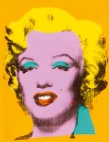What to Cite and How to Cite It
- How do I know what kind of source I am using?
- Where do I find publication information?
- What citation style should I use?
- When do I need to include a citation?
- Should I reference digital content, such as pictures of artwork, or infographics when I include them in an essay or PowerPoint presentation?
- How do I make a Reference list, Bibliography, or Works Cited page? How do I know which one to use?
- How do I cite an article, book, website, or other source? What information do I need to include in a reference entry?
- How do I format my paper?
- How do I avoid plagiarism?
- Should I use citation generators?
How do I know what kind of source I am using?
Scholarly Journals, Popular Magazines, and Newspapers or News agencies
For instance, if an article was published in a print copy or on the website of Maclean’s or The New York Times, you would reference it as an article in a magazine or newspaper; however, if an article is peer reviewed, then it is almost certainly published in a scholarly journal, and you would use the appropriate citation style.
If you are unsure, look carefully at the information attached to the article.
- Newspapers and magazines generally include full dates for their articles, including month, day, and year.
- Scholarly journals generally only have a year as their publication date but include a volume number (and sometimes an issue number) to indicate when in the year an article was published.
Webpages and Online Reports or Documents
If you download a document (often as a PDF) from a website, and the document has an author and publication date, then you would cite it as a document or report and include information to show that you accessed it online.
In contrast, if you are citing information that you found on a webpage, you would use a referencing style for a webpage or website.
How do I know if a source is scholarly or peer reviewed?
The easiest way to determine if a source is scholarly is to use a database from Trent’s Bata Library. From the search results page, scroll to the article you would like to use, and click on the “Get it at Trent” button. This will take you to a new page. If the source is scholarly, you will see the words “Peer Reviewed” at the top of the page.
Trent’s Bata Library also provides an excellent tutorial on how to identify scholarly sources when you do not have access to the “Get it at Trent” button.
Where do I find publication information?
Books
Journal Articles
Webpages
What citation style should I use?
Each discipline follows different rules for citation. Start with Find Documentation Style by Discipline. Remember to refer to your syllabus and assignment instructions for particular course requirements for citation.
When do I need to include a citation?
- Cite all paraphrases or summaries of ideas or information that are not your own.
- Cite all direct quotations of two or more consecutive words. In fact, a single distinctive term taken from a source should be placed in quotation marks and cited.
- Cite all sources that inform your work, including data, charts, films, maps, graphs, web pages, photographs, television news reports, lectures, and video/audio files.
Should I reference digital content, such as pictures of artwork, or infographics when I include them in an essay or PowerPoint presentation?
Image from Marilyn Diptych, 1962 by Andy Warhol
Note: Adapted from POP goes the AGO on July 21 with the blockbuster exhibition Andy Warhol, by AGO, 2021, https://ago.ca/agoinsider/were-re-opening. Copyright 2021 by the AGO.
So, if you would like to use an image you have found on the internet in your academic work for something other than visual appeal you need to follow the guidelines set out by the documentation style you are using. Most of these documentation styles require that you create a figure to house the item, and include a copyright attribution in the figure note.
Note: You may use these images because the The Copyright Act allows copyrighted images to be used in an ‘education’ setting under the ‘fair dealing’ exception.
How to cite a picture, drawing, or other image, from a public website using APA documentation style.
How do I make a Reference list, Bibliography, or Works Cited list? How do I know which one to use?
- Works Cited - MLA (Modern Language Association)
- Bibliography - Footnoting (Chicago Style)
- References - CSE (Council of Science Editors)
- What style should I use?
How do I cite an article, book, website, or other source? What information do I need to include in a reference entry?
- APA (American Psychological Association)
- MLA (Modern Language Association)
- Footnoting (Chicago Style)
- CSE (Council of Science Editors)
- What style should I use?
How do I format my paper?
Formatting guidelines and sample papers are available for the four major styles:
- APA (American Psychological Association)
- MLA (Modern Language Association)
- Footnoting (Chicago Style)
- CSE (Council of Science Editors)
How do I avoid plagiarism?
- Follow the conventions for citation and referencing that your discipline requires. Include both in-text citations and complete reference lists.
- Learn to paraphrase and summarize effectively. Read Paraphrasing and Summarizing: "Putting It In Your Own Words"
- Practice good research and writing techniques. Review the Avoiding Plagiarism section of How to Use Sources.


